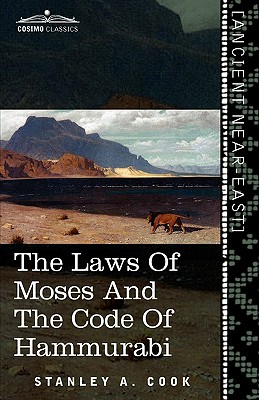Synopsis
The Laws of Moses and the Code of Hammurabi are thousands-years old documents, evidence of the social structure and rules of ancient civilizations. The Code of Hammurabi is roughly one thousand years older than the Ten Commandments, or Laws of Moses, which were written in 1500 B.C., and is considered the oldest set of laws in existence. Promulgated by the king Hammurabi in roughly 2250 B.C., the Code is a set of rules guiding everyday life, listing everything from punishments for stealing and murder to the prices commanded for animals, products, and services. The famous "eye for an eye" maxim comes from the Hammurabi code: "If a man puts out the eye of an equal, his eye shall be put out." S.A. Cook's translation of The Laws of Moses and the Code of Hammurabi includes the code, the history of the regions in which it was employed-Babylonia and Israel, the elements of Law, the social structures of families, workers, and slaves, information on land, agriculture, trade, and commerce, protection of the people, and a detailed Index. STANLEY ARTHUR COOK (1837-1949) was born in King's Lynn, Norfolk. He was the Regius Professor of Hebrew at Cambridge University from 1932-1938, where he also received his Bachelor's and Master's degrees. He was on the editorial staff of the Encyclopedia Biblica from 1896-1903, as well as an editorial advisor on Biblical subjects for the Encyclopedia Britannica. He edited Palestine Exploration Fund publications from 1902-1932 and authored many of his own books on ancient Hebrew and Middle East culture.
Présentation de l'éditeur
This book was originally published prior to 1923, and represents a reproduction of an important historical work, maintaining the same format as the original work. While some publishers have opted to apply OCR (optical character recognition) technology to the process, we believe this leads to sub-optimal results (frequent typographical errors, strange characters and confusing formatting) and does not adequately preserve the historical character of the original artifact. We believe this work is culturally important in its original archival form. While we strive to adequately clean and digitally enhance the original work, there are occasionally instances where imperfections such as blurred or missing pages, poor pictures or errant marks may have been introduced due to either the quality of the original work or the scanning process itself. Despite these occasional imperfections, we have brought it back into print as part of our ongoing global book preservation commitment, providing customers with access to the best possible historical reprints. We appreciate your understanding of these occasional imperfections, and sincerely hope you enjoy seeing the book in a format as close as possible to that intended by the original publisher.
Les informations fournies dans la section « A propos du livre » peuvent faire référence à une autre édition de ce titre.
